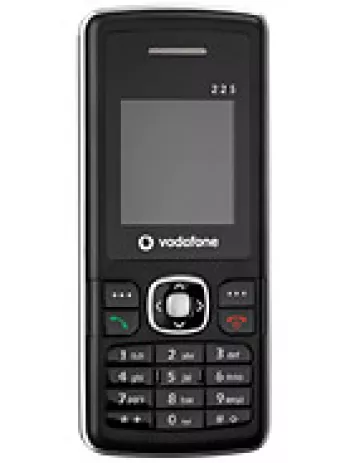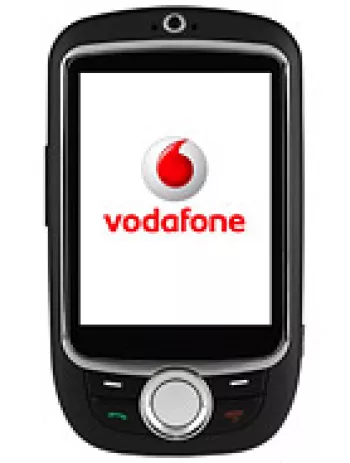
Introduction to Vodafone 533 Crystal
The Vodafone 533 Crystal, a device released in the fall of 2009, was a notable handset of its time. This feature phone marked its presence in the market with a blend of affordability and basic functionalities, catering to users who sought a straightforward mobile experience. In this article, we'll delve into the various aspects of the Vodafone 533 Crystal, discussing its design, features, performance, and reception in the market.
Design and Body
The Vodafone 533 Crystal was designed to be compact and lightweight. With dimensions of 98.5 x 46.2 x 14.7 mm and weighing merely 90 grams, it was an easy phone to carry and handle. The device was crafted mainly with plastic materials, which, although not premium, provided a sturdy feel. The phone featured a Mini-SIM slot and was discontinued shortly after its release, which adds a hint of exclusivity to those who managed to own one during its short market lifespan.
Display Quality
The handset came equipped with a 2.0-inch TFT display capable of showing 256K colors. With a resolution of 176 x 220 pixels, the display offered a modest viewing experience, appropriate for its classification as a feature phone. The screen-to-body ratio stood at approximately 27.7%, which was typical for devices in this segment during that era.
Network and Connectivity
The Vodafone 533 Crystal supported GSM networks on bands 900, 1800, and 1900. It featured GPRS and EDGE technologies classified at class 10, providing basic mobile internet connectivity. For local connectivity, Bluetooth 2.0 with A2DP was available, although WLAN support was absent, which was common for feature phones at the time.
Camera Specifications
A 1.3 MP camera was embedded in the back of the device. This single camera setup, without video recording capabilities, was typical in budget phones of that period. The camera performance was satisfactory for basic photography aimed at capturing simple and spontaneous moments.
Memory and Storage
The internal memory of the Vodafone 533 Crystal was limited to 8MB. However, expandability options were available through a dedicated microSDHC card slot, allowing for the storage of more contacts, messages, and multimedia files. The phone could store up to 500 phonebook entries and maintain call records of up to 20 dialed, received, and missed calls each.
Sound and Audio
The Vodafone 533 Crystal featured a built-in loudspeaker but lacked a 3.5mm audio jack. This could have been a limitation for users who preferred personal listening through wired headphones. Nonetheless, its stereo FM radio with RDS was a redeeming feature for radio enthusiasts.
Operating System and User Interface
As a feature phone, the Vodafone 533 Crystal did not run on advanced operating systems like Android or iOS. It operated on a simpler, proprietary system that supported basic functionalities such as SMS, MMS, and a WAP 2.0/xHTML browser. The Java support with MIDP 2.0 allowed for the installation of simple applications and games.
Battery Life
The device was powered by a removable Li-Ion 750 mAh battery. According to official specifications, it could last up to 350 hours on standby and provide up to 3 hours of talk time. This battery performance was adequate for users who needed a phone primarily for calls and text messaging.
Market Reception and Price
The Vodafone 533 Crystal was priced at around 100 EUR, positioning it as an affordable choice for those seeking basic mobile functionalities. Its design and features resonated well with budget-conscious consumers, making it a popular choice for first-time mobile users or as a secondary device.
Conclusion
In summary, the Vodafone 533 Crystal was a feature phone that balanced essential communication needs with affordability. Despite its simplicity and limited functionalities compared to smartphones, it successfully catered to a market segment that appreciated straightforward technology. Its compact design and robust feature set continue to evoke nostalgia among mobile enthusiasts who witnessed the early days of mobile communication.
Key Features of Vodafone 533 Crystal
- Lightweight and compact design at 90 g with dimensions of 98.5 x 46.2 x 14.7 mm.
- 2.0-inch TFT screen with 256K colors providing moderate display quality.
- Expandable storage via microSDHC card slot for additional memory.
- Bluetooth 2.0, A2DP support enabling wireless audio streaming.
- Stereo FM radio with RDS for listening to FM stations.
- User-friendly interface with Java support for running basic applications.
- Removable Li-Ion 750 mAh battery offering up to 350 hours of standby time.
Disadvantages of Vodafone 533 Crystal
- No 3G or 4G connectivity, relies solely on 2G GSM networks.
- Limited internal memory of 8MB, requiring a microSDHC card for additional storage.
- Small display size of 2.0 inches with low resolution (176 x 220 pixels).
- Single 1.3 MP main camera with no video recording capability.
- Lacks a selfie camera.
- No WLAN connectivity for internet access.
- No GPS positioning functionality.
- No 3.5mm audio jack, potentially limiting headphone options.
- Bluetooth version 2.0 may result in slower data transfer speeds compared to newer versions.
- USB version 1.1 is outdated and provides slower data transfer speeds.
- Short battery life with up to 3 hours of talk time.

View Also
More Phones
All Rights Reserved +13916 Phones © Mobilawy 2025

























